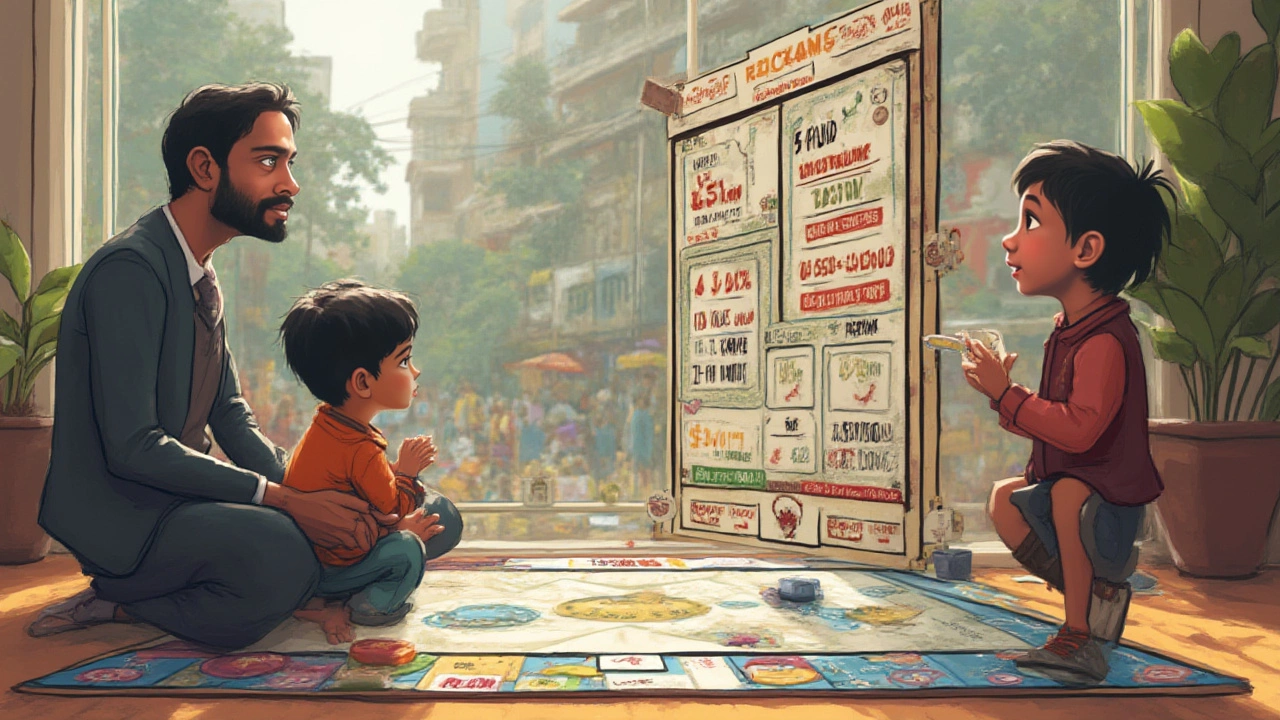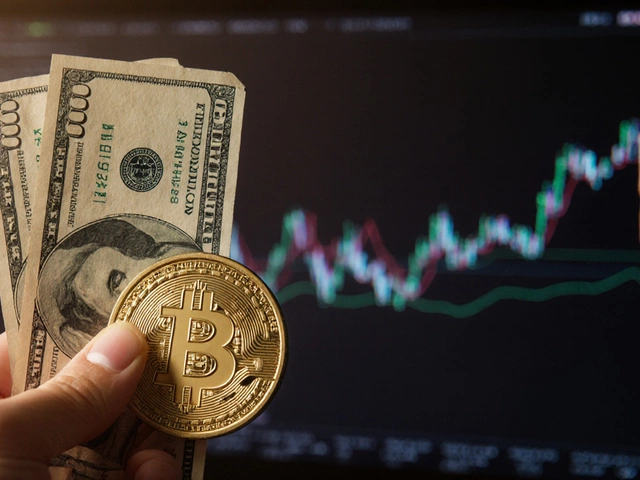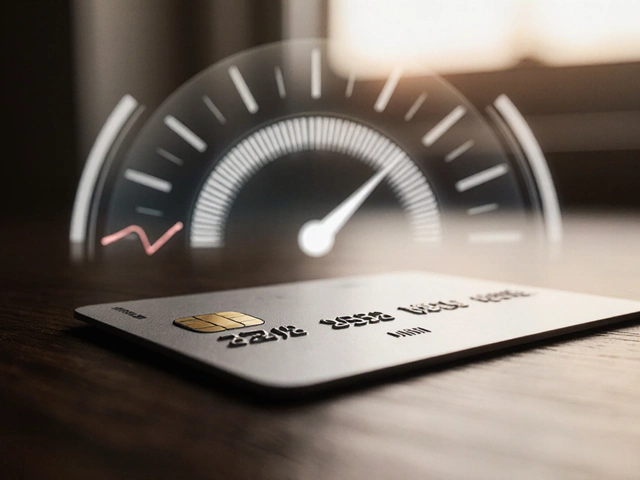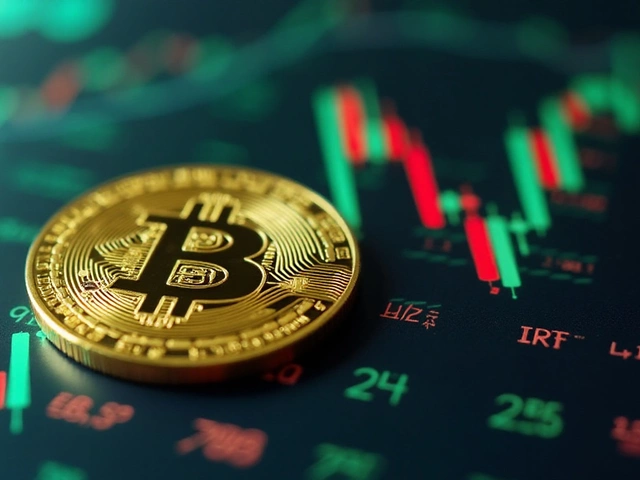
Picture this: You’ve just stashed away $100,000, feeling that rush like you scored the final try in a State of Origin. But then a thought creeps in—will that chunk of change still pack the same punch in thirty years? Money can seem like quicksand. Its buying power slips beneath your feet, sometimes so slowly you don’t notice until you’re deep in it. Think about your granddad bragging about $10 meat pies or $1 cinema tickets. The sad truth is, cash you tuck under your mattress today might just lose its muscle when you finally cash out in the future.
Why Money Loses Value Over Time
Everyone talks about inflation, but what is it, really? It’s that silent thief that eats away what your dollars can buy, year after year. Basically, as prices climb, your $100 bill won’t stretch as far as it used to. It’s driven by everything from the cost of oil, to global politics, to how much coffee Aussies are guzzling every morning. Fact: Since 1995, the average Aussie inflation rate has hovered around 2.6% per year, according to the Reserve Bank of Australia. It doesn’t sound huge until you realise what that does to your wallet over decades.
Take a look at a loaf of bread. In 1990, the average Aussie paid under 80 cents for one. In 2025, it’s closer to $4.50. When you zoom out, that slow burn makes a big difference. Inflation doesn’t just make groceries pricier. It shifts what you can do with every dollar, from buying a house, to booking holidays, to grabbing a flat white.
The two biggest drivers for this are demand-pull inflation—when everyone has more money and chases the same stuff—and cost-push inflation—when raw materials or services get more expensive. Sometimes, governments spark inflation on purpose to encourage people to spend instead of hoarding. Central banks, like the RBA, play puppet-master with interest rates to try keeping inflation in that ‘sweet spot’. Get it wrong, and you’ll see things spiral, like Argentina’s prices shooting up 200% in 2023. Not pretty.
Historical Value: What $100K Meant Across the Decades
Let’s time travel. Back in 1995, $100,000 would’ve bought you a two-bedroom flat in the heart of Sydney. Today? That same home is worth closer to $1.3 million. If you stuffed $100,000 under your bed, you’d now have…well, just $100,000, but you’d be living somewhere a far, far cry from city centre.
Check out this table to see how much $100,000 from past decades would be in today’s money, adjusted for inflation (using the RBA’s inflation calculator):
| Year | $100,000 Then Equals | Main Sydney House Price |
|---|---|---|
| 1995 | $203,000 (2025 dollars) | $200,000 |
| 2005 | $148,000 | $520,000 |
| 2015 | $120,000 | $850,000 |
| 2025 | $100,000 (current value) | $1,300,000 |
See the trend? Money that just sits around loses its kick. What would’ve covered your dream house now barely buys a parking space.
The same story plays out with everyday favourites: a Big Mac went from $2.45 in 1995 to over $7.20 in 2025. Movie tickets? $6.50 to well over $20. If you’d kept your $100k in cash, you’d be watching inflation shrink its real value every single year, just as it’s happened for decades.

Predicting the Future: What Will 100k Be Worth in 2055?
Forecasting the future is a bit like trying to nail jelly to the wall, but we can make some educated guesses using Aussie inflation trends. If inflation sticks to its current 2.5% rate each year, here’s the formula in play:
Future Value = Present Value / (1 + Inflation Rate)^Years
Plug in the numbers: $100,000 / (1+0.025)^30. That leaves you with about $47,800 in today’s buying power by 2055. In plain speak, 100k in 30 years will buy less than half of what it does now. If inflation heats up to 3%, you’re looking at just $41,100.
Here’s a table with different inflation scenarios for your $100k tucked safely away but not invested:
| Annual Inflation Rate | Value in 2055 (2025 dollars) |
|---|---|
| 2.0% | $55,100 |
| 2.5% | $47,800 |
| 3.0% | $41,100 |
| 5.0% | $23,100 |
Now, let’s get real. It’s anyone’s guess how long-term inflation will track, because it twists to the tune of energy crises, politics, tech breakthroughs, and population growth. But unless the cost of living suddenly drops off a cliff, your savings will probably get whittled away by at least half, if not more.
Future Australia might see driverless utes or $22 avocados, but one thing seems certain—$100,000 won’t have as much pull at the shops as it does now.
Can You Outrun Inflation? Smart Moves To Protect Your Savings
If reading this leaves you feeling like your money is melting, here’s your lifeline: you can beat inflation, but only if your money works as hard as you do. Step one? Get it out of the savings account paying a pitiful 1% interest.
Why? A high-yield account or term deposit can help, but with real-world interest still lagging behind inflation, that’s only buying you time. The big move? Investing. Long-term, the Australian stock market has returned about 7-8% per year—even after inflation. The US S&P 500 index has done a similar 7% on average over the last 70 years. Sure, there are years when it tanks, but time smooths out those bumps.
Here’s how someone in Sydney might play it smart for the next thirty years:
- Invest in a diverse mix of shares or ETFs for broad market exposure
- Top up your superannuation regularly to take advantage of tax breaks
- Avoid putting all your eggs in one basket—property, bonds, and even a sprinkle of safe global investments add resilience
- Don’t panic when markets wobble; those who jump in and out usually miss the big gains
- Review your investments yearly—costs, returns, and risk should all be in the mix
Diversification is key. If you shove all your money into one hot stock, you could be left with less than you started. But scatter it smartly, and even with inflation chewing away, your money can grow in real terms.
Here’s a quick example. $100,000 invested at 7% per year, compounding, would grow to nearly $761,225 after three decades. Even after 2.5% inflation, that’s worth $363,900 in today’s money—far, far better than watching it dwindle in a low-interest account.
If you need to dip into your savings sooner, there are less volatile paths: bonds, fixed deposits, or high-interest savings accounts. They won’t make you rich, but they’ll certainly keep you safer from inflation than a jar under your bed. A mix of risk levels gives you flexibility.

Making 0k Work For You: Practical Tips & Common Traps
So you want your $100k to not just survive, but thrive across three decades? It’s possible—here’s the lowdown.
- Set Clear Goals: Are you chasing a house deposit, dreaming of early retirement, or just wanting to give the kids or grandkids a leg-up? Different goals mean different strategies.
- Automate Good Habits: Set up automatic transfers to your investments or super—out of sight, out of mind, and no temptation to skip a month when the beach is calling.
- Minimize Fees: A small percentage in extra fees now can slash thousands off your end result over thirty years. Stick with low-cost funds where you can.
- Stay Informed: Don’t stick your head in the sand. Keep up with changes in tax, law, and market performance. Even just reading a financial news email once a week helps.
- Don’t Panic: Markets wobble. Property values dip. Headlines cry doom. The worst thing you can do is sell low, buy high, or jump in and out on a whim. Play the long game.
- Diversify: The more options you have, the less likely you are to get wiped out by a crashing stock or a dud property market.
Watch out for classic mistakes. Leaving all your money in a basic savings account just won’t cut it. Chasing get-rich-quick schemes (we’ve all had that mate with ‘sure thing’ crypto picks) is a fast track to disappointment. Also, don’t forget inflation when you’re planning for the future. If your bank or adviser shows you gains without subtracting inflation, take those numbers with a boulder of salt.
Your future self will thank you for doing a little homework now. How much freedom and fun you’ll have at 65 depends a lot on the moves you make at 35. $100k can grow massively—or shrink—depending on what you do next.








Write a comment